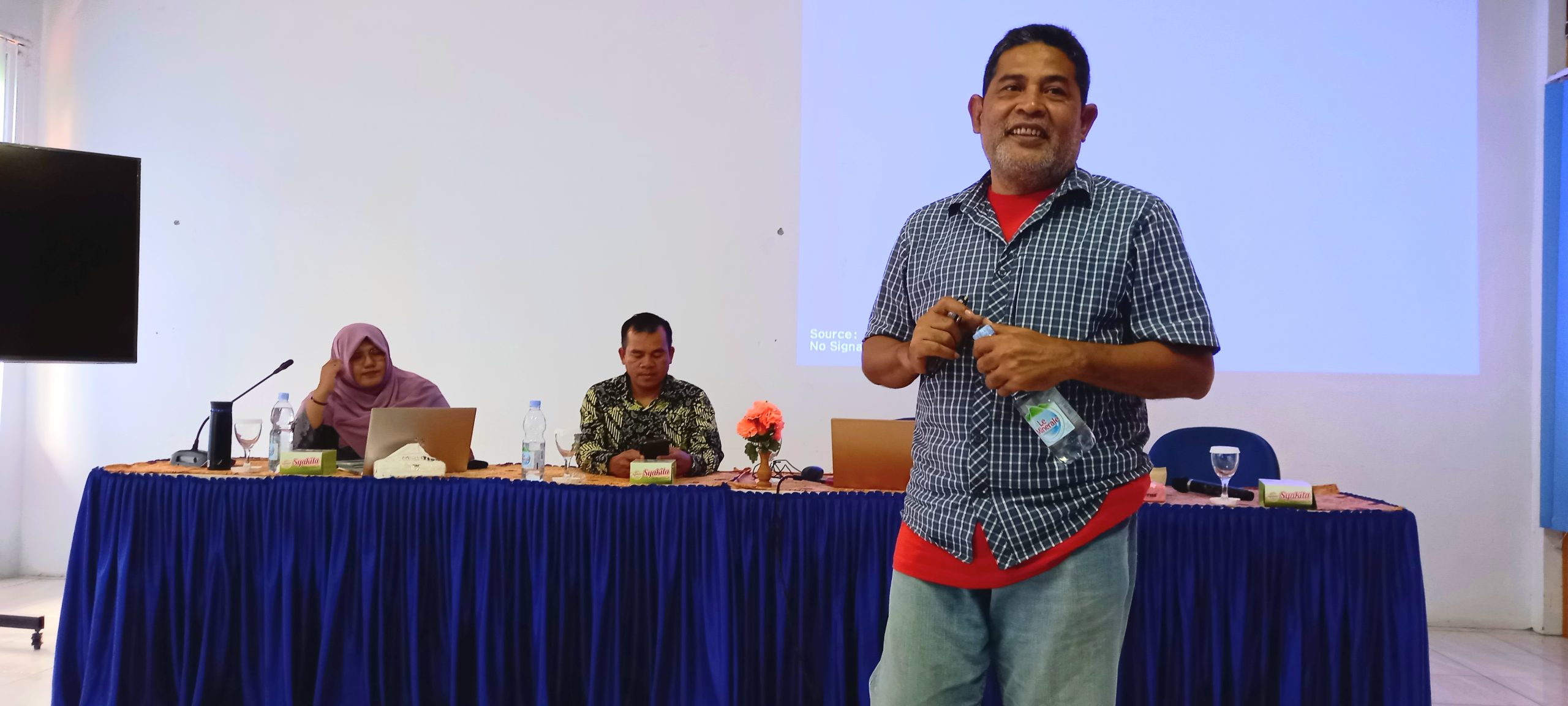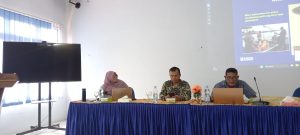
Dr. Ir. Farajallah, M.Si from Biology Department, FMIPA, IPB University gave a general lecture at the Biology Department, FMIPA UNIB
Biology Masters Study Program of FMIPA UNIB held a general Lecture on Monday 09 October 2023 which took place in the FMIPA UNIB Dean’s meeting room with great Keynote Speaker Dr. Ir. Farajallah, M.Si with the theme “eDNA Methods And Molecular Analysis On Animals”. He is an Associate Professor and Senior Biology Lecturer at Biology Department, FMIPA IPB from the Division of Animal Physiology and Behavior. Dr. Ir. Farajallah, M.Si is also an expert in the field of DNA-related biomolecular techniques which are used to explain animal diversity and zoogeographic patterns in Indonesia. This public lecture activity was also attended by the Dean of FMIPA, Dr. Jarulis M.Si, lecturer Staff at the Biology Department and Biology students.
 This general lecture itself provides an explanation of eDNA, which is a way to detect various living organisms (prokaryotic or eukaryotic) which leave traces of their DNA through cell tissue, dirt, skin or other body parts that contain genetic material. Traces of DNA are left in the environment such as soil, water and sediment. The loss of species and the presence of invasive species in a habitat can be a threat to native species in an ecosystem. So we need the latest techniques that are able to detect the presence of an organism. One technique that can detect target organisms in the environment quickly and accurately is environmental DNA (e-DNA) for monitoring and conservation of biodiversity. The results of the analysis show that by using the e-DNA approach, monitoring and conservation of biological diversity can be detected according to the taxonomy of organisms and molecular markers. Cytochrome c Oxidase subunit 1 (COI) molecular markers are capable of detecting a variety of both rare and invasive species. Thus it can be concluded that the e-DNA approach can be used as a method for monitoring and conservation of biological diversity in various ecosystems.
This general lecture itself provides an explanation of eDNA, which is a way to detect various living organisms (prokaryotic or eukaryotic) which leave traces of their DNA through cell tissue, dirt, skin or other body parts that contain genetic material. Traces of DNA are left in the environment such as soil, water and sediment. The loss of species and the presence of invasive species in a habitat can be a threat to native species in an ecosystem. So we need the latest techniques that are able to detect the presence of an organism. One technique that can detect target organisms in the environment quickly and accurately is environmental DNA (e-DNA) for monitoring and conservation of biodiversity. The results of the analysis show that by using the e-DNA approach, monitoring and conservation of biological diversity can be detected according to the taxonomy of organisms and molecular markers. Cytochrome c Oxidase subunit 1 (COI) molecular markers are capable of detecting a variety of both rare and invasive species. Thus it can be concluded that the e-DNA approach can be used as a method for monitoring and conservation of biological diversity in various ecosystems.
